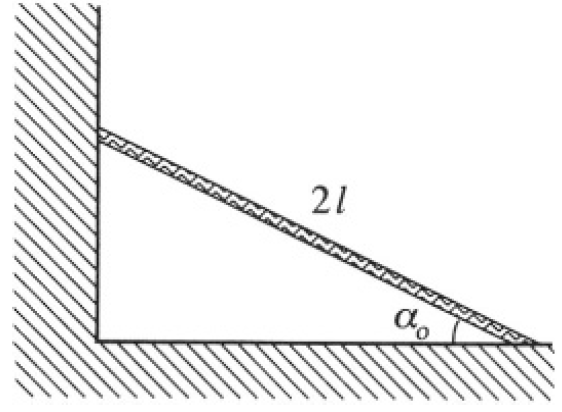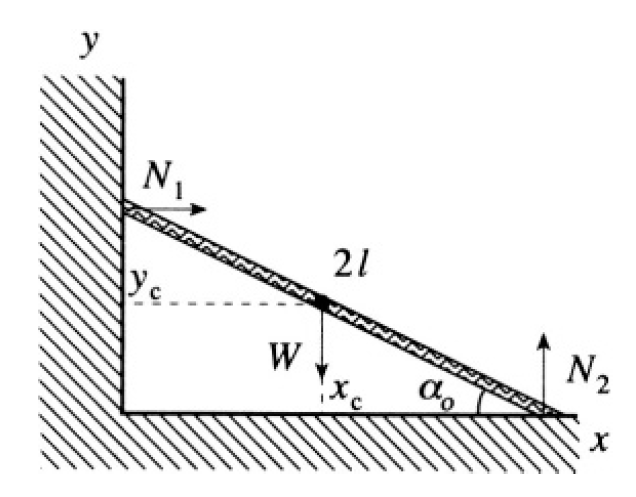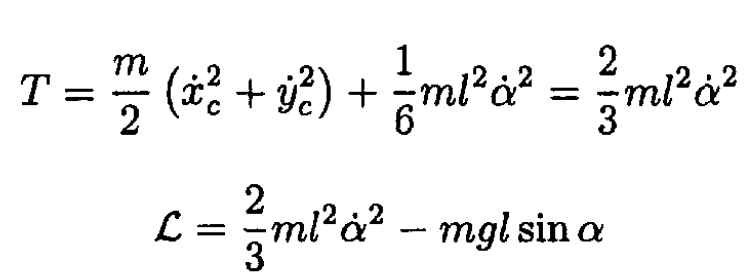
Sliding Ladder
 المؤلف:
Sidney B. Cahn Boris E. Nadgorny
المؤلف:
Sidney B. Cahn Boris E. Nadgorny
 المصدر:
A GUIDE TO PHYSICS PROBLEMS
المصدر:
A GUIDE TO PHYSICS PROBLEMS
 الجزء والصفحة:
part 1 , p 16
الجزء والصفحة:
part 1 , p 16
 1-8-2016
1-8-2016
 1883
1883
Sliding Ladder
A ladder of mass m and length 2l stands against a frictionless wall with its feet on a frictionless floor. If it is let go with initial angle α0, what will be the angle when the ladder loses contact with the wall (see Figure 1.1)?

Figure 1.1
SOLUTION
Let us watch the ladder until it leaves the wall. Forces N1 and N2 are normal reactions of the wall and floor, respectively; W = mg is the weight of the ladder; xc and yc are the coordinates of the center of mass (see Figure.1.2). First, find the Lagrangian of the system. The kinetic energy  is the moment of inertia relative to the center of mass
is the moment of inertia relative to the center of mass


Figure.1.2
 (1)
(1)
From Lagrange’s equations
 (2)
(2)
In addition, from energy conservation
 (3)
(3)
We will assume that the ladder loses contact with the wall before it does so with the floor. (This has to be checked). Up until the ladder slides away from the wall, there are constraints of the form
 (4)
(4)
 (5)
(5)
Since N1 is the only force acting in the x direction, N1 = mẍc When the ladder loses contact with the wall, N1 = 0. Differentiating (4) twice gives
 (6)
(6)
From (6)  and substituting it into (2), we have for the angle the ladder leaves the wall
and substituting it into (2), we have for the angle the ladder leaves the wall
 (7)
(7)
From (3) and (7), we obtain
 (8)
(8)
We have assumed that the ladder loses contact with the wall first. Let us check this assumption. It implies that N2 > 0 at all times before the ladder leaves the wall
 (9)
(9)
From (5) and (6), we have
 (10)
(10)
Therefore
 (11)
(11)
At the time the ladder leaves the wall

On the other hand, N2 is monotonically decreasing while is decreasing (see (3)). So, our assumption was right and indeed α = sin-1(2/3 sin α0).
 الاكثر قراءة في مواضيع اخرى
الاكثر قراءة في مواضيع اخرى
 اخر الاخبار
اخر الاخبار
اخبار العتبة العباسية المقدسة


